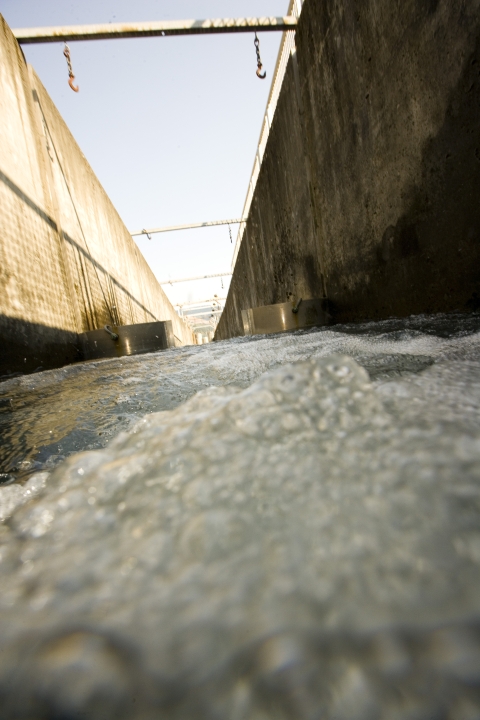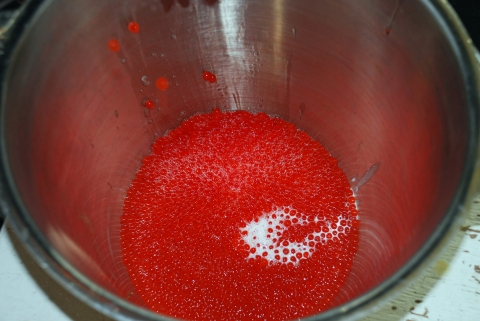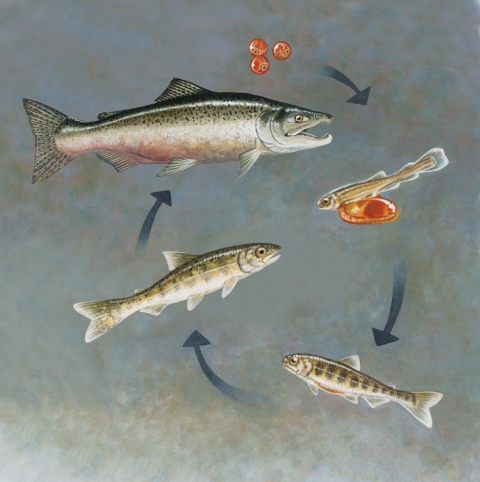Hatchery Lifecycle
Salmon return to their birthplace at varying times of the year, depending on species. For hatcheries, they enter the hatchery by climbing up the fish ladder. Fish ladders are more like a staircase than a ladder, allowing a resting space between “rungs” for salmon making this journey. Returning salmon adults are sorted and spawned. All Pacific salmon die after spawning. At hatcheries, we put the salmon to “sleep” before killing them to remove the eggs. Milt, or sperm, is added to the eggs and fertilization is instantaneous.
Eggs
Eggs are rinsed, sorted, enumerated, and incubated for hatching. The eggs remain in the incubation trays for about 3 months. After the first 30 days the eggs are at a stage known as Eyed Eggs. At this point we can handle the eggs and the workers pick out any dead eggs and put them back in the trays.
Sac-fry
In another 30 days the eggs hatch and are known as Sacfry or Alevin. They receive all of their nutrients from a protein-rich yolk sac attached to their bellies.
Feeding Begins
When the yolk sac is absorbed, the fish are moved into raceways and feeding begins. The fish are fed according to their developmental stage. Fish food starts out very fine, almost a powdery dust and the feed size increases as the fish grow larger. It is during this time period that fish are marked.
Marking
All fish in federal hatcheries are marked with an adipose fin clip, denoting them as hatchery fish. This allows for a selective fishery, if you catch a fish that lacks its adipose fin you can keep it; if you catch a fish that has the adipose fin you are required to release that fish. A small percentage of our salmon also receive a Coded Wire Tag, which allows us to track our fish to see where they travel in the ocean and also to account for who is catching our fish. The last type of tag is a Passive Integrated Transponder (PIT). These tags are used for special studies and also to estimate how many fish are returning as adults.
Smolt
As the small salmon continue to grow they begin to go through physiological changes that will allow them to move from fresh to salt water. This stage is known as smolt. Smolts start to turn a bright silvery color, become agitated and their gills and kidneys begin to change. It is at this life stage that we release them from the hatchery into the wild.
To the Ocean
To reach the ocean, the smolts must pass many perils. They must get past a dam (two dams if they are coming from Warm Springs), dodge predators waiting for them at every opportunity, and find a safe haven near the mouth of the Columbia River to adjust to saltwater.
Return
After two to five years in the ocean, salmon and steelhead return to the very same rivers in which they were born. They travel upstream without eating, locate the familiar water of their youth, and prepare to spawn. For hatchery salmon, that means leaping up a salmon ladder back into the hatchery, where the cycle of death and birth begins anew.






